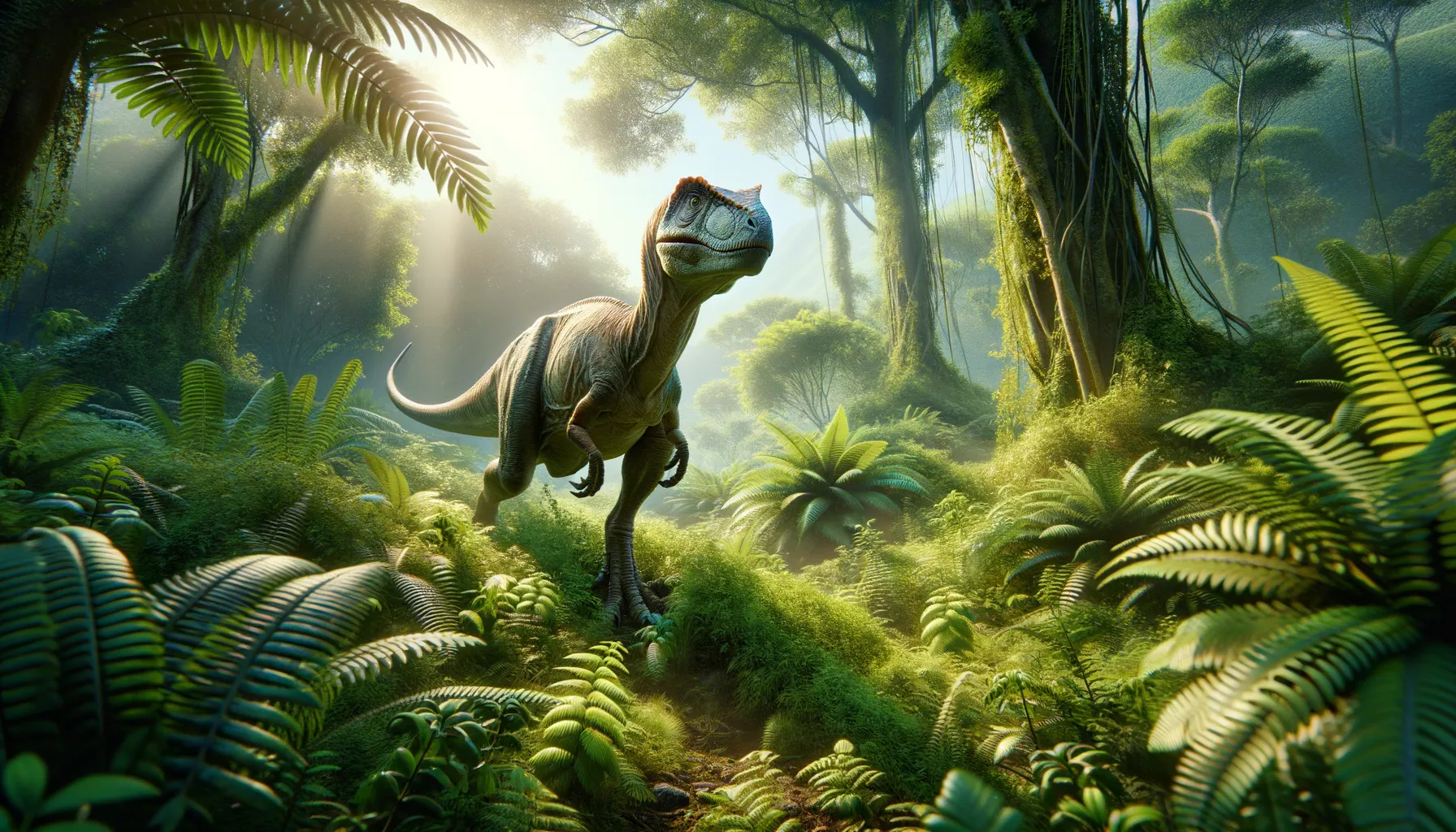
Fabrosaurus
A nimble herbivore of the Jurassic era.
Period
Jurassic
Length
About 2 meters long.
Height
Around 1 meter tall.
Weight
Approximately 50 kg.
Fabrosaurus was a small, bipedal herbivorous dinosaur that lived during the Early Jurassic period. It was one of the earliest ornithischians, a group of dinosaurs that were herbivores with specific hip structures. Its lightweight and agile body helped it navigate through the dense vegetation of its time, while its small size made it adept at avoiding larger predators.
Diet
Fabrosaurus primarily fed on low-lying plants and possibly soft ferns. Its small, sharp teeth were well-suited for slicing through vegetation. This diet would have sustained its small, agile body as it foraged for food.
Hunting
Being an herbivore, Fabrosaurus did not hunt but likely had strategies to avoid predators. Its speed and agility may have allowed it to dart quickly into cover when threatened. Its small size would also help it remain less visible in its environment.
Environmental challenges
Fabrosaurus faced environmental challenges such as finding enough vegetation, particularly during dry spells. Competition from other herbivores for the same food sources would have been significant. Predation by larger carnivorous dinosaurs was a constant threat, driving the necessity for swift movement and long-term survival strategies. Climate changes during the Jurassic period could also have impacted food availability and habitat stability.
Speed
Relatively quick for its size.
Lifespan
Estimated to live up to 10-20 years.
First discovery
Discovered in the 1970s in Lesotho, Africa.
Fun Facts
- Fabrosaurus was a small, early dinosaur that lived around 200 million years ago during the Early Jurassic period.
- It was a herbivore, meaning it primarily ate plants and leaves.
- Fabrosaurus was estimated to be about the size of a modern-day chicken, making it quite a tiny dinosaur.
- The name 'Fabrosaurus' means 'Fabre's lizard,' named after the paleontologist who discovered its remains.
- This dinosaur had a lightweight body and long hind legs, which suggests it was a fast runner and could escape predators quickly.
- Fabrosaurus fossils were first discovered in southern Africa, giving us insight into the diverse dinosaur life that existed there.
- Unlike bigger dinosaurs, Fabrosaurus likely lived in groups or herds for protection and survival.
Growth and Development
Fabrosaurus likely hatched from eggs and grew quickly in its early years. This rapid growth would have been crucial for avoiding predation. As a small dinosaur, reaching maturity at a faster rate could increase its chances of survival. The physical development included strengthening its legs for speed and head features for efficient grazing.
Habitat
Fabrosaurus lived in what is now known as Southern Africa, a region that was rich in lush vegetation during the Jurassic period. Its habitat consisted of semi-arid landscapes with patches of dense vegetation. Rivers and streams provided essential water, supporting a stable ecosystem for many herbivorous species. The varied terrain offered hiding spots and abundant plant life, ideal for Fabrosaurus’ survival.
Interaction with other species
Fabrosaurus likely shared its habitat with other small herbivores, competing for similar food resources. It coexisted with early theropods, which posed predatory threats. Despite competition, these species might have benefited each other in some aspects, such as collective vigilance against larger predators. The presence of diverse herbivores may have also driven evolutionary adaptations in Fabrosaurus.
Natural lifespan
Fabrosaurus had a natural lifespan of up to 20 years.
Reproduction
Fabrosaurus was oviparous, laying eggs from which young would hatch. Nesting sites were presumably hidden in dense vegetation to protect from predators. Parental care behavior is not clearly understood but may have included guarding the nest. Juveniles quickly grew after hatching, improving their chances of survival.
Social behaviour
Fabrosaurus may have lived in small groups or herds, providing mutual protection. Group living could deter predators and enhance foraging efficiency. Communication among individuals, potentially using vocalizations or visual signals, would aid in social interactions. However, solitary behavior may have occurred, especially when food was scarce.
Fossil locations
Fossil remains of Fabrosaurus have been primarily found in the southern parts of Africa, specifically Lesotho. The region’s geological features preserved these early dinosaur remains. Additional fragmentary fossils have been discovered elsewhere, helping to piece together its existence. These fossils provide critical insights into the lifestyle and environment of the Early Jurassic period where Fabrosaurus thrived.
